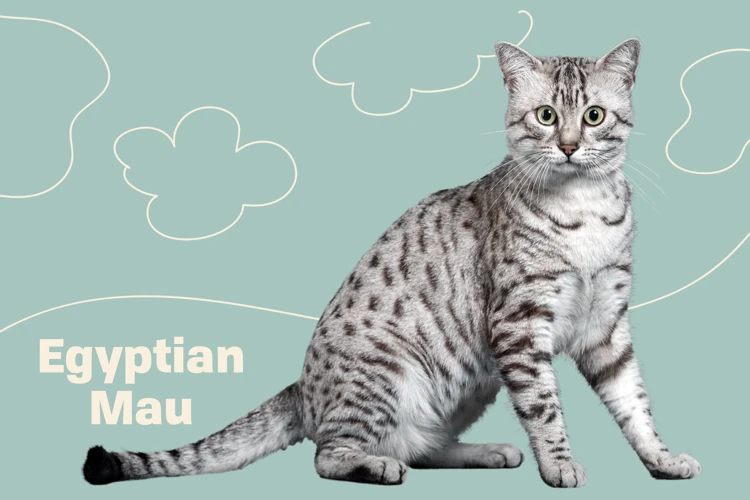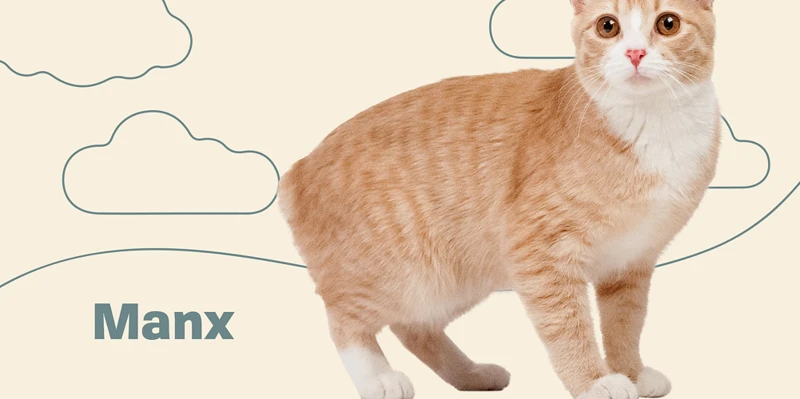Have you recently brought a California Spangled Cat into your family and wondering about the best way to train them? Training any cat, let alone a California Spangled Cat, can be a daunting task that requires patience and perseverance. As a cat owner, it’s essential to establish a positive relationship with your feline companion, and the best way to do so is through positive reinforcement training. In this article, we will delve into the benefits of using positive reinforcement, various training techniques, common mistakes to avoid, and specific behaviors you can teach your California Spangled Cat using this method. Let’s get started to ensure your California Spangled Cat receives the best training possible.
Why Positive Reinforcement is Effective for Training California Spangled Cats

Positive reinforcement is a term that is commonly used in the realm of animal training, and for good reason. When it comes to training California Spangled Cats, positive reinforcement is an effective method that can lead to long-lasting results. By rewarding good behavior and ignoring bad behavior, positive reinforcement creates an incentive for the California Spangled Cat to continue displaying desirable actions, and to phase out undesirable ones. In this section, we will explore the science behind positive reinforcement and why it is so effective for training California Spangled Cats. Additionally, we will discuss the benefits of using positive reinforcement, and how it can be utilized to train California Spangled Cats effectively.
The Science of Positive Reinforcement
The science of positive reinforcement is rooted in the concept of operant conditioning, a theory developed by psychologist B.F. Skinner in the 1930s. Operant conditioning involves changing behavior through consequences. In other words, a behavior that is reinforced is more likely to be repeated, while one that is punished is less likely to occur again. This is where positive reinforcement comes into play.
Positive reinforcement involves providing rewards to a behavior that you want to encourage, making it more likely to be repeated. When a California Spangled Cat performs a desired behavior, rewarding them with treats, verbal praise, or playtime, helps establish a positive association with that behavior. The repetition of this positive reinforcement will result in the desired behavior becoming more frequent.
To further illustrate, consider an example of teaching a California Spangled Cat to come when called. Every time the cat comes when called, praise them and give them a treat. This will create a positive association with coming when called and, over time, the cat will learn that behavior.
It is important to note that timing is crucial when it comes to positive reinforcement. The reward must follow the behavior immediately to make the association between behavior and reward clear.
The science of positive reinforcement involves changing behavior through rewards. By providing a reward every time your California Spangled Cat performs a desired behavior, you can encourage and reinforce that behavior. Positive reinforcement training can be used for a variety of behaviors, including teaching tricks, litter training, training to walk on a leash, and correcting unwanted behaviors. It is a highly effective training method that can result in a better-behaved and happier California Spangled Cat.
The Advantages of Positive Reinforcement for California Spangled Cats
Positive reinforcement is an effective training method for California Spangled Cats because it has several advantages over other forms of training. Here are some of the advantages of positive reinforcement for California Spangled Cats:
| Advantages | Explanation |
| Encourages Good Behavior | Positive reinforcement focuses on rewarding good behavior rather than punishing bad behavior, which encourages the cat to repeat the good behavior to receive the reward. |
| Creates a Stronger Bond | Training your California Spangled Cat with positive reinforcement can help strengthen your bond with the cat, as it requires spending quality time together and providing a positive experience for the cat. |
| Helps Reduce Stress | Using positive reinforcement can reduce stress for both you and your California Spangled Cat, as it creates a more relaxed training environment and eliminates negative punishment-based training methods. |
| Increases Confidence in the Cat | Positive reinforcement can help build confidence in your California Spangled Cat, as it focuses on rewarding the cat for good behavior and showing the cat that they are capable of learning and doing the right thing. |
By using positive reinforcement in training, rather than punishment-based methods, you can create a positive and enjoyable training environment for your California Spangled Cat. Additionally, by rewarding good behavior, you can encourage your cat to continue this behavior, strengthening your bond and reducing stress for both of you.
The Basics of Positive Reinforcement Training for California Spangled Cats

Positive reinforcement training is an effective and humane way to train California Spangled cats. It involves rewarding desirable behavior instead of punishing undesirable behavior. By doing this, you can train your cat to perform specific actions such as using the litter box, scratching posts, or coming when called. In this section, we will go over the basics of positive reinforcement training for California Spangled cats, including setting goals, identifying rewards, and using positive reinforcement to eliminate unwanted behaviors. For more advanced training techniques, see our section on clicker training for California Spangled cats.
Setting Goals for Your California Spangled Cat
When it comes to positive reinforcement training for your California Spangled cat, it’s important to set clear and achievable goals. Here are some steps to follow when setting goals for your furry friend:
- Identify the behavior you want to train: Do you want your cat to stop scratching the furniture? Come when called? Use the litter box consistently? Whatever the desired behavior may be, it’s important to identify it clearly before starting the training process.
- Break the behavior down into achievable steps: Once you’ve identified the behavior, it’s essential to break it down into small, achievable steps. For example, if you want to train your cat to use a scratching post instead of the furniture, you may start by placing the post near the furniture and rewarding your cat for simply sniffing around it.
- Set a timeline: Positive reinforcement training takes time and patience, but it’s important to set a timeline for achieving your goals. Keep in mind that each cat is different and may progress at their own pace, so be flexible with your timeline.
- Choose appropriate rewards: Rewards are a key component of positive reinforcement training. Choose rewards that are meaningful to your cat, such as their favorite treats or toys.
- Track progress: Keep track of your cat’s progress as you work towards your goals. Not only will this help you stay on track, but it can also be motivating to see how far your cat has come.
By following these steps, you can set clear and achievable goals for your California Spangled cat and work towards positive reinforcement training success. Remember to be patient and consistent throughout the process, and always reward your cat for their progress.
Identifying the Best Rewards for Your California Spangled Cat
Positive reinforcement training is based on rewarding your cat for good behavior, and one of the keys to success is using rewards that motivate your cat. However, not all cats are motivated by the same rewards, and some may even be indifferent to certain treats or toys. That’s why it’s important to identify the best rewards for your California Spangled Cat.
What are some examples of rewards you can use in positive reinforcement training?
| Reward | Description | Benefits |
|---|---|---|
| Treats | Small pieces of soft, chewy food such as chicken, tuna, or salmon | Easy to administer, highly motivating for many cats |
| Toy | An interactive toy such as a feather wand or ball | Encourages play and exercise, provides mental stimulation |
| Verbal praise | A happy tone of voice coupled with a pat or cuddle | Makes your cat feel loved, can be used in any situation |
| Clicker | A small device that makes a clicking sound | Provides a clear marker for good behavior, easy to use |
| Special privileges | Allowing your cat access to a favorite spot or activity | Encourages good behavior, shows your cat that they are valued |
How can you tell which rewards your cat prefers?
One way to identify your cat’s favorite rewards is to offer them a variety of options and monitor their reactions. Does your cat go crazy for a certain type of treat? Or do they prefer a particular toy? Pay attention to what your cat seems to enjoy the most, and use that as their primary reward in training sessions.
It’s also important to note that different rewards may be more effective in different training situations. For example, if you’re trying to teach your cat to come when called, verbal praise and treats may be more effective than a toy. You may need to experiment with different rewards to determine what works best in each scenario.
Above all, remember that positive reinforcement training should be a fun and enjoyable experience for both you and your cat. By using rewards that motivate and excite your cat, you can create a training environment that is enjoyable for everyone involved.
Using Positive Reinforcement to Eliminate Unwanted Behaviors
One of the key benefits of positive reinforcement training for California Spangled Cats is its effectiveness in eliminating unwanted behaviors. Rather than punishing your cat for unwanted behaviors like scratching furniture or jumping on counters, positive reinforcement focuses on rewarding and encouraging good behavior.
Here are some effective strategies for using positive reinforcement to eliminate unwanted behaviors in your California Spangled Cat:
Explanation
Identify the behavior you want to eliminate
Before you can effectively use positive reinforcement to stop unwanted behaviors, you need to identify the specific behavior you want to eliminate. Be as specific as possible, so you can tailor your training to address that behavior.
Redirect your cat’s attention
When you catch your cat engaging in unwanted behavior, use a positive, distracting stimulus to redirect their attention. For example, if your cat is scratching the furniture, offer them a toy or a scratching post that they can use instead.
Reward good behavior
When your cat stops engaging in the unwanted behavior and instead does something positive (like using the scratching post), reward them with treats, praise, or playtime. This will reinforce the positive behavior and encourage them to repeat it in the future.
Avoid punishment
Avoid using punishment or negative reinforcement to try to eliminate unwanted behaviors, as this can be stressful for your cat and may actually make the problem worse.
Using positive reinforcement to eliminate unwanted behaviors in your California Spangled Cat may take time and consistency, but with patience and practice, you can help your cat develop good habits and a more positive attitude toward training.
Tips for Success with Positive Reinforcement Training for California Spangled Cats

If you want to make the most out of positive reinforcement training for your California Spangled cat, there are several tips you should keep in mind. Positive reinforcement is an effective training method, but it requires a certain approach that can take some time to master. By following these tips, you can ensure that your training sessions are successful and enjoyable for both you and your feline friend. So, let’s dive into some important tips for success with positive reinforcement training.
Consistency is Key
When it comes to positive reinforcement training for California Spangled cats, consistency is key in ensuring success. Inconsistencies in your training sessions can confuse your cat and make it difficult for them to learn and understand what is expected of them.
To help with consistency, it’s important to create a schedule and stick to it. This should include regular training sessions at the same time and place each day. You should also use the same commands and rewards consistently throughout the training process.
To further emphasize the importance of consistency, take a look at the following table:
| Consistency in Training | Why it’s Important |
|---|---|
| Training at the same time each day | Helps establish a routine and makes it easier for your cat to anticipate and prepare for training sessions. |
| Using the same commands and rewards | Makes it easier for your cat to understand what is expected of them and what they will receive for good behavior. |
| Training in the same location | Reduces distractions and allows your cat to focus solely on the training session at hand. |
Consistency is crucial when it comes to positive reinforcement training for California Spangled cats. Creating a regular schedule and using the same commands and rewards will make it easier for your cat to learn and behave appropriately. Stay committed to the training process, and soon your furry friend will be a well-behaved and happy companion.
Make Training a Positive Experience
Positive reinforcement training for California Spangled cats should always be a pleasant and enjoyable experience for both you and your pet. Here are some tips to make training a positive experience.
| Tip | Description |
|---|---|
| Use Treats: | Using treats is a great way to reward your cat for good behavior during training. Small treats that your cat loves can be used to encourage and motivate them to learn new skills and behaviors. |
| Keep Sessions Short: | Training sessions should be limited to short, focused bursts of 5-10 minutes each. Avoid overworking your cat or training for too long as they may become tired or frustrated and lose interest in the session. |
| Be Positive: | Keep the tone of training positive and upbeat. Use an enthusiastic voice to praise your cat when they succeed and offer reassurance when they struggle. This will help keep them engaged and motivated during training. |
| Avoid Punishment: | Never punish your cat during training. Punishment can lead to fear or anxiety in your cat, which can negatively impact their learning and cause them to become uncooperative during training. |
| Take Breaks: | If you sense your cat is getting bored or becoming uncooperative, take a break. Give your cat a chance to relax and recharge. Resume training once your cat is ready and willing to participate. |
By incorporating these tips into your positive reinforcement training sessions, you can ensure that your California Spangled cat will look forward to each training session. Remember, positive reinforcement and love will go a long way in building a strong bond between you and your pet.
Be Patient and Understanding
When training your California Spangled cat with positive reinforcement, it’s important to be patient and understanding. Training takes time and effort, and your cat may not always get it right on the first try. It’s important to remember that your cat is a unique individual and may require more or less time to learn certain behaviors. Don’t get frustrated or give up if progress seems slow, as every training session is an opportunity for improvement.
Here are some tips for practicing patience and understanding during positive reinforcement training:
- Give your cat time to process information: Cats need time to understand what you want them to do. Don’t rush your cat or move on to the next behavior before they have mastered the current one.
- Be consistent with commands and rewards: Consistency is key when training your cat. Use the same command for a behavior every time, and offer the same reward for a desired behavior (e.g. always give a treat when your cat uses the scratching post).
- Don’t punish your cat for mistakes: Remember that positive reinforcement focuses on rewarding desired behaviors rather than punishing unwanted ones. Refrain from scolding or punishing your cat if they don’t do what you ask, as this can discourage them and make training more difficult.
- Take breaks as needed: If you or your cat seems to be getting frustrated or overwhelmed, it’s okay to take a break. Give both you and your cat time to relax and come back to training later with a clear head.
Positive reinforcement training requires patience, understanding, and a willingness to work with your cat to achieve desired behaviors. Keep a positive attitude and remember that every small step is progress towards your goal.
Common Mistakes to Avoid when Positive Reinforcement Training California Spangled Cats

As with any form of training, there can be common missteps that arise during the process of positive reinforcement training for California Spangled Cats. These mistakes can hinder progress and potentially undo any training that has already taken place. It’s important to recognize and avoid these pitfalls in order to achieve successful training results. Let’s take a closer look at some of the common mistakes to avoid during positive reinforcement cat training.
Using Punishment Instead of Positive Reinforcement
When it comes to training California Spangled Cats, using punishment as a method can be counterproductive. Punishment is an ineffective way of training as it can lead to fear and mistrust between you and your cat. Instead, positive reinforcement techniques should be used to help instill the desired behaviors.
| Punishment | Positive Reinforcement |
|———–|———————–|
| Can lead to fear and mistrust | Builds trust and strengthens the bond |
| Creates stress for the cat | Promotes a relaxed and comfortable learning environment |
| Does not encourage desired behaviours | Reinforces good behaviour |
| Can lead to unpredictable or undesirable behaviour | Encourages consistent and desirable behaviour |
Punishing your cat for unwanted behavior may suppress the behavior temporarily, but it does not help teach the cat what the desired behavior is. In contrast, by rewarding desired behavior with treats or praise, the cat is more likely to repeat the behavior in the future.
Additionally, punishment can cause stress and anxiety for the cat, leading to undesirable stress-related behaviors such as aggression or avoidance. On the other hand, positive reinforcement helps build trust and strengthen the bond between owner and cat, as well as creating a relaxed and comfortable learning environment.
Instead of relying on punishment during training your California Spangled Cat, introduce positive reinforcement techniques such as clicker training or treat rewards. This will help to build a strong relationship with your cat based on trust and positive interaction.
Expecting Too Much Too Soon
When it comes to positive reinforcement training for California Spangled cats, one of the most common mistakes that pet owners make is expecting too much too soon. It’s essential to understand that cats and all other pets are unique individuals, and they all have their personalities and learning styles. You cannot force your cat to learn something in a day or two.
Here are some common issues that pet owners face when they expect too much too soon from positive reinforcement training:
- Overwhelming Your Cat: Introducing too many commands and asking your cat to learn them all quickly can cause them to feel overwhelmed and stressed, leading to reluctance to participate in future training sessions, and even refusing to perform the previously learned commands.
- Not Taking Small Steps: Break down the training tasks into smaller, more manageable steps, and observe your cat’s progress. Your cat must learn the basics before moving on to more advanced training.
- Feeling Frustrated: In the beginning, training your California Spangled cat will inevitably have its challenges. Stay determined and try not to get frustrated or impatient.
Positive reinforcement training requires time, patience, and consistency. By setting small goals and celebrating tiny victories, your cat will become more confident and willing to learn new things. Remember, training your cat should be a positive and enriching experience for both you and your furry friend.
Inconsistency in Training Sessions
One of the biggest mistakes that cat owners make when using positive reinforcement to train their California Spangled cats is being inconsistent in their training sessions. Consistency is key when it comes to positive reinforcement training, and if you skip sessions or neglect to reward good behavior, your cat may become confused or frustrated and not respond as well to the training.
To ensure that your training sessions are consistent, consider creating a training schedule or chart that outlines the behaviors you want to train and the rewards you will offer for each behavior. Stick to this schedule as closely as possible, and try to train at the same time each day so your cat knows what to expect.
Additionally, make sure that you are always rewarding good behavior and using positive reinforcement techniques consistently. If you ignore good behavior one day but reward it the next, your cat will not understand what behavior is expected of them, leading to confusion and frustration.
If you are having trouble being consistent, consider enlisting the help of a professional trainer or behaviorist who can offer guidance and support. Alternatively, consider using an online training program or app that offers reminders and tips for staying consistent in your training.
Inconsistency can also occur if you are not clear in your expectations or if you are constantly changing your training methods. Be clear in your language and instructions, and choose a training method that works best for you and your cat. Stick with this method until you see progress, and only make minor adjustments as necessary.
By being consistent in your positive reinforcement training sessions, you can help your California Spangled cat learn the behaviors you want them to exhibit and form a trusting, positive relationship with you.
Training Specific Behaviors with Positive Reinforcement
Now that you understand the basics of positive reinforcement and its effectiveness for training California Spangled cats, it’s time to dive into specific behaviors that you can teach using this technique. With a well-planned approach and patience, positive reinforcement can be a powerful tool for training your feline friend. Let’s take a closer look at some of the common behaviors you may want to work on with your California Spangled cat. By the end of this section, you’ll have a better understanding of how to apply positive reinforcement to teach your cat desired behaviors.
Using Positive Reinforcement to Teach California Spangled Cats to Use a Scratching Post
Scratching is a natural behavior for California Spangled Cats, and providing them with a designated scratching post is essential to prevent furniture damage. Fortunately, positive reinforcement training can be a highly effective way to teach your cat to use a scratching post. Here are some steps to follow:
- Choose the right scratching post: There are a wide variety of scratching posts on the market, including vertical, horizontal, and angled models. Experiment to see which type your cat prefers, and make sure the post is tall enough for your cat to stretch fully.
- Introduce your cat to the scratching post: Place the scratching post in a prominent location and let your cat explore it on their own terms. You can encourage them to use it by scratching your own nails on the post or sprinkling some catnip on it.
- Reward your cat for using the scratching post: Whenever your cat uses the scratching post, give them a treat or verbal praise. This will help them associate the post with positive outcomes.
- Discourage unwanted scratching: If your cat starts to scratch furniture or other items, redirect them to the scratching post and reward them when they use it instead.
- Repeat the process: Consistency is key when it comes to positive reinforcement training. Be patient and continue to reward your cat for using the scratching post until it becomes a habit.
- Maintain the scratching post: Make sure to keep the scratching post clean and well-maintained, and replace it if it becomes worn or damaged.
By following these steps, you can effectively teach your California Spangled Cat to use a scratching post through positive reinforcement training. Remember to be consistent, patient and reward your cat for their desired behavior. This will create a positive association in their minds, and they’ll eventually start going back to their scratching post every time they feel the need to scratch.
Teaching Your California Spangled Cat to Come When Called with Positive Reinforcement
The California Spangled cat is a breed known for their independence, which can make training them to come when called a bit challenging. However, with positive reinforcement training, this behavior can be effectively taught. Here are some steps you can take to teach your California Spangled cat to come when called:
1. Choose a Distinctive Cue Word
Choose a unique word or phrase that you will use every time you want your cat to come to you. It could be anything from “come” to “treat time”. The key is to use the same word consistently so your cat learns to associate it with coming to you.
2. Start Indoors and in a Quiet Environment
Starting the training process in a quiet and familiar environment will help your cat to focus on the task at hand. Begin by calling your cat’s name followed by the cue word and then waiting for them to come to you. When they do, reward them with a treat or praise.
3. Increase the Distance and Add Distractions
As your cat becomes more comfortable with responding to the cue word indoors, gradually increase the distance and add mild distractions. This could be done by calling your cat from another room or while they are playing with a toy.
4. Use High-Value Rewards
Using high-value rewards such as their favorite treats or toys will motivate your cat to respond to the cue word. Be sure to only reward them when they come to you, not when they approach and then wander off.
5. Keep Training Sessions Short
Since cats have a short attention span, it is important to keep training sessions short and consistent. Aim for several 5-10 minute training sessions throughout the day rather than one long session.
Remember, positive reinforcement is the key to successfully training your California Spangled cat to come when called. Use patience, consistency and high-value rewards to reinforce this behavior in your feline friend.
Using Positive Reinforcement to Train Your California Spangled Cat to Use the Litter Box
Training your California Spangled cat to use the litter box can be a challenging task, but with the right approach, it can be achieved using positive reinforcement. Here are some steps to follow when training your cat to use the litter box:
1. Choose the right litter box: The litter box should be big enough for your cat to comfortably move around and should be placed in a quiet and private location. It’s also essential to choose the right type of litter that your cat prefers.
2. Introduce your cat to the litter box: Take your cat to the litter box and encourage them to smell it and explore it. If your cat seems hesitant, you can try placing them in the litter box gently to help them get used to it.
3. Use positive reinforcement when your cat uses the litter box: When your cat uses the litter box, reward them with treats and lots of praise. This will encourage them to use the litter box again in the future.
4. Be consistent with your training: Make sure you’re always consistent with your training. Encourage your cat to use the litter box every time they need to go and reward them every time they do.
5. Address any issues: If your cat is not using the litter box, it’s important to address any potential issues. For example, they may not like the type of litter you’re using or may not feel comfortable in the location of the litter box.
Using positive reinforcement to train your California Spangled cat to use the litter box can be a rewarding experience for both you and your pet. Keep in mind that every cat is different, and it may take some time and patience to achieve success. Stay consistent with your training and address any issues that may arise along the way, and soon enough, your cat will be using the litter box like a pro.
Conclusion
The Importance of Positive Reinforcement in Training California Spangled Cats: Conclusion
Positive reinforcement is a highly effective and powerful training technique that can be used to train your California Spangled cat. It helps to promote good behaviors while eliminating unwanted ones, making it the best way to ensure your cat learns desirable behaviors in a fun, humane and stress-free way.
By using positive reinforcement, you can create a strong bond with your cat, boosting their confidence and trust in you as their owner. It also helps to ensure that they will happily comply with your commands and learn new behaviors, empowering them to live a healthy and happy life.
During positive reinforcement training, it is crucial to be patient and consistent while being creative with rewards, ensuring that your cat is always happy and engaged. Remember to celebrate every small success as it will lead to bigger ones in the future, helping your cat grow into a happy and well-adjusted family pet.
In conclusion, positive reinforcement is a valuable tool that every California Spangled cat owner should incorporate into their training routine. By taking the time to learn and implement positive reinforcement techniques, you can create a stronger bond and a happier life for both you and your feline friend.
Frequently Asked Questions
Can all cats be trained with positive reinforcement?
Yes, all cats, including California Spangled Cats, can be effectively trained using positive reinforcement techniques.
What are some examples of positive reinforcement rewards for cats?
Examples of positive reinforcement rewards for cats include treats, toys, praise, and affection.
Can positive reinforcement be used to correct unwanted behaviors in cats?
Yes, positive reinforcement can be used to train a cat to stop unwanted behaviors and replace them with desirable ones.
How long does it take to train a California Spangled Cat with positive reinforcement techniques?
The timeline for training a California Spangled Cat using positive reinforcement can vary depending on the individual cat and the specific behavior being trained. It may take anywhere from a few days to a few weeks or even longer.
Is it better to start training a California Spangled Cat as a kitten or as an adult?
It is generally easier to train a California Spangled Cat as a kitten when they are more receptive to learning, but positive reinforcement techniques can be effective for cats of any age.
Can multiple people in the household train a California Spangled Cat with positive reinforcement?
Yes, it is recommended that all members of a household who interact with a California Spangled Cat use positive reinforcement techniques consistently in order to achieve the best results.
What should I do if my California Spangled Cat does not respond to positive reinforcement training?
If your California Spangled Cat is not responding to positive reinforcement training, you may need to revisit your approach. It may be helpful to seek guidance from a professional animal behaviorist.
Can positive reinforcement training be used in conjunction with other training methods?
Yes, positive reinforcement training can be used in combination with other training methods, but it is important to avoid using punishing or aversive techniques that can harm a cat’s wellbeing.
Is it possible to train a California Spangled Cat to walk on a leash using positive reinforcement?
Yes, it is possible to train a California Spangled Cat to walk on a leash using positive reinforcement techniques, but it may take time and patience.
Are there any risks involved with using positive reinforcement training on California Spangled Cats?
There are no risks involved with using positive reinforcement training on California Spangled Cats, as long as the techniques are used correctly and the cat’s wellbeing is prioritized.







